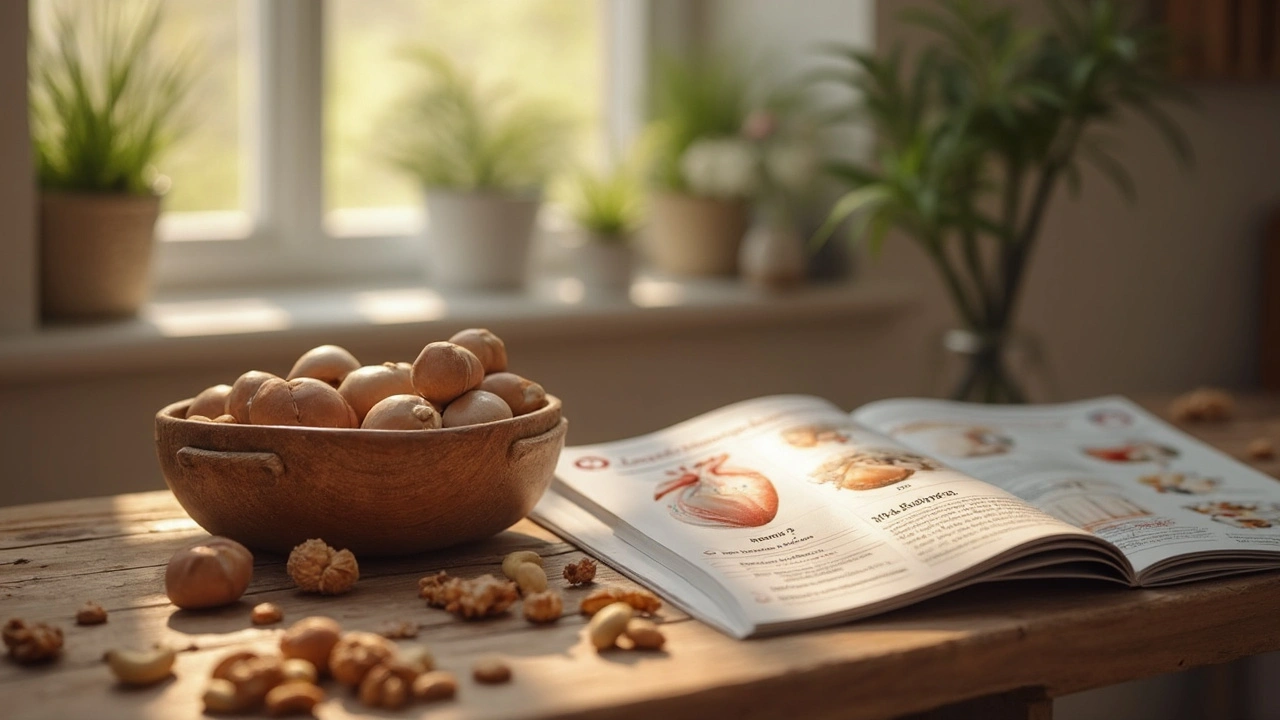Healthy Nuts — which to pick, how much to eat, and easy ways to add them daily
Want a simple, tasty habit that helps your heart and keeps you full between meals? A small handful of nuts most days can do that. Nuts pack protein, healthy fats, fiber, vitamins, and minerals in a tiny package — and they work great as snacks, salad toppers, or a quick boost to breakfast.
Here’s a clear, useful guide so you can choose, store, and enjoy nuts without guessing or overdoing it.
Top nuts and what they do for you
Almonds — high in vitamin E, fiber, and magnesium. Great for lowering hunger and making yogurt or oatmeal more filling.
Walnuts — one of the best plant sources of omega-3 (ALA). Try them when your brain needs a boost or mixed into a salad for crunch.
Pistachios — protein-rich and often lower in calories per nut. They’re satisfying and taste great in savory or sweet dishes.
Cashews — creamy and mild, with magnesium and iron. They make smooth nut butters and dairy-free sauces.
Brazil nuts — tiny but powerful: one or two a day can cover your selenium needs. Don’t eat a big handful every day because selenium adds up fast.
How much to eat and smart ways to include them
Serving size: aim for about 1 ounce (roughly 28 grams) per serving — that’s a small handful. Examples: ~23 almonds, ~14 cashews, or ~7 walnut halves. Calories range from about 160–200 per ounce, so portion control matters if you’re watching weight.
When to eat them? Use nuts as snacks, stir them into breakfast oats, toss on salads, blend into smoothies, or swap croutons for roasted nuts on soups. If you add nut butter, measure 1 tablespoon as one serving.
Easy tips: pre-portion bags or containers so you don’t overeat; choose unsalted or lightly salted versions; pick raw or dry-roasted over oil-roasted to avoid extra fats.
Watch out for allergies. If you’re cooking for others, label dishes and avoid cross-contact in the kitchen.
Storage and buying tips: buy nuts in small amounts or in sealed packages. Keep them in the fridge or freezer to prevent rancidity, especially walnuts and flax-containing mixes. Smell a bitter or paint-like odor? That’s rancid — toss it.
Quick recipe ideas: sprinkle chopped almonds on yogurt with honey and berries; make a walnut pesto (swap basil for parsley if you prefer); mash avocado with lime and chopped pistachios for toast; blend cashews with water and lemon for a creamy sauce.
Try adding a measured handful of your favorite nut to one meal a day for two weeks and see how you feel. Small, consistent changes are easier to keep than big overhauls — and they taste a lot better too.
26
Chestnuts vs Other Nuts: Fatty Acids & Phytosterols for Heart Health
Chestnuts are often overlooked next to almonds, walnuts, and cashews, but do they help your heart as much as the usual snack nuts? This article takes a close look at chestnuts and compares their fatty acid makeup and phytosterol content to other common nuts. Get clear on the real differences and pick up tips that could help protect your heart. Plus, discover if chestnuts might deserve a spot in your pantry (and why I keep some around for my family).
Latest Posts
Popular Posts
-
 GLP-1 Side Effects: How to Manage Nausea, Dosing, and Realistic Expectations
GLP-1 Side Effects: How to Manage Nausea, Dosing, and Realistic Expectations
-
 Amyotrophic Lateral Sclerosis: How Riluzole Slows Neurodegeneration and Extends Life
Amyotrophic Lateral Sclerosis: How Riluzole Slows Neurodegeneration and Extends Life
-
 Tricyclic Antidepressant Side Effects: Amitriptyline, Nortriptyline, and Other TCAs Explained
Tricyclic Antidepressant Side Effects: Amitriptyline, Nortriptyline, and Other TCAs Explained
-
 How to Keep Medications Safe from Children and Pets at Home
How to Keep Medications Safe from Children and Pets at Home
-
 Pharmacy Reimbursement: How Generic Substitution Impacts Pharmacies and Patients Financially
Pharmacy Reimbursement: How Generic Substitution Impacts Pharmacies and Patients Financially



